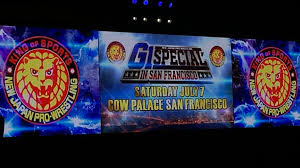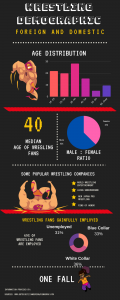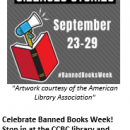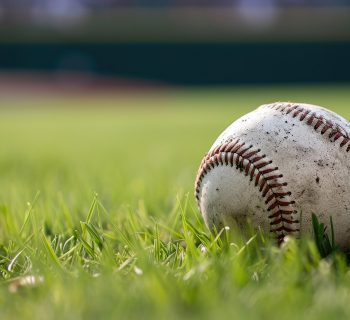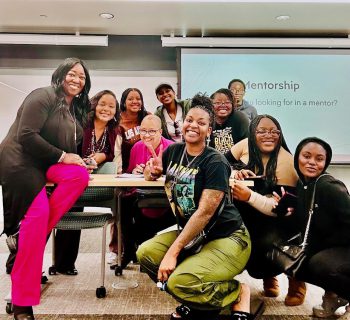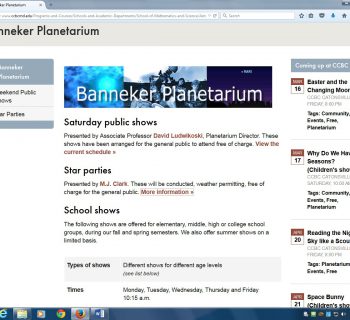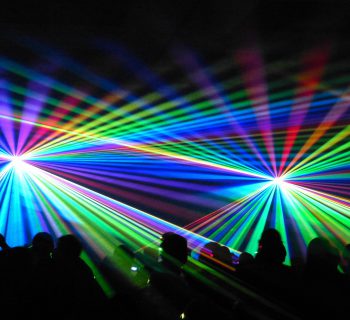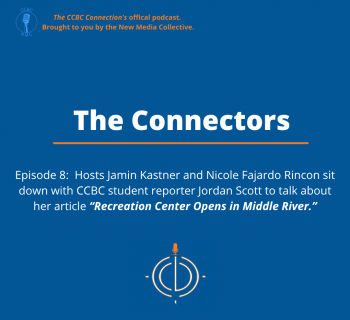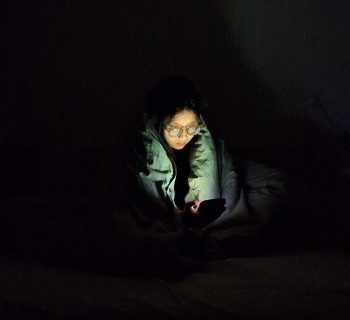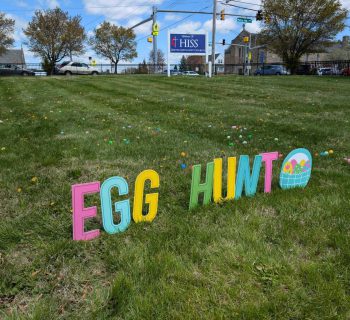Images & Article by Sierra Hunter
Causal Wrestling Fans - a fan who watches wrestling as pure entertainment.
As the lights in the arena dimmed, the roar of the crowd grew exponentially from the murmur of fan chatter and the rustling of bags of men changing into merch they purchased a few hours ago. Once New Japan's theme song blared through the speakers, new life was brought on by the people who have been waiting 7 hours for this event to start outside the Cow Palace Stadium in San Francisco, California.
As I stood there in that crowd as a casual wrestling fan going to her first wrestling event, I wondered whether the commitment to this sport (Yes, I said sport, it takes real endurance and strength to do what they do for several minutes) is worth it?
CCBC student Devin "Puddy" Curtis spoke upon his first experience with wrestling saying, "I became a wrestling fan accidentally actually. I played a Sega game called WWF Monday Night Raw. Then one day as I was flipping channels, I spotted one of the wrestlers from the video game. I flipped onto another channel, and I saw another wrestler from the video game. This exposed me to the WWF and WCW. I was already hooked on the video game and now I'm hooked on to something that I didn't even think was real in the first place."
In recent years, wrestling’s viewership has gone up to a median age of 40 from the original audience's 23-year old age range from 18 years ago. In a 2017 Deadspin Article, Wrestling Journalist Dave Meltzer spoke on the reason why age disparity exists within the rating, “I think that the hardcore wrestling fans are more into wrestling and will spend more money on wrestling than any fan base ever would before, but there is not as many of them.” He continues, "even if you go to the late ’80s period, there were way, way more wrestling fans—but it is not like they are going to be spending $2,000 to go on their vacation to a wrestling show because they wouldn’t do that. It was just a different era.”
Wrestling fan and podcast host, Rob Lee spoke upon his journey as a fan. "I can only speak for myself because I have an unusual relationship with fans, but mine (his experience) has gone from being more active, going to live events, actually traveling going to different coasts. When I was younger, I only went to two live shows, and they were local; I wanted to see The Smackdown live show, and I think it was the one where Arnold Schwarzenegger punched Triple H in the face, just happy to be there. Now, I go to an event, and I need a merch budget and a travel budget, this is a legit event for me. I think fans are serious because the price tag has gone up."
Some fans are even quick to blame casual fans, who may not stick to the product as would someone who spends time and money to follow their favorite product like "core" fans. However, this may not be the case; if you look at WWE ratings, their products are commanded by casual viewers like children and some adults who spend their money on t-shirts and merch outside regardless if they know the wrestler.
The problem comes with keeping those viewers interested in the brand. With so many options for entertainment, it is easy for an observer to tune out when the company is refusing to evolve with the times; this could mean stale and predictable storylines, lack of character development, etc.
Lee continues, "I think their lowest recorded rating was last week on Monday Night Raw. My brother is currently staying with me right now, and he's like 'I haven't checked into wrestling for a while, what's going on?' Roman Raines is going against Bobby Lashley yet again tonight, Monday Night Raw used to be must-see TV, and now it's like the equivalent to a house show with a 3-hour investment.”
On July 7th, New Japan Pro Wrestling (NJPW) held a 3-hour event at San Francisco's Cow Palace. The three-day event included a meet-and-greet, press conference at Treasure Island and an All Pro indie wrestling event, called King of Indie (KOI). San Francisco's G1 Special would mark NJPW's third annual event held in California.
Entering the meet-and-greet was a little nerve-wracking as I was an outside observer in a room filled with die-hard fans. I was optimistic; however, I came into the event knowing the possibility that I may not be well received. However, I think due to the small wrestling fan-base in San Francisco, it was more natural to fall into the fray. The people that I met were super friendly and welcoming. It also helped that my brother acted as a buffer for "marks," a fan who avidly regards or behaves as though professional wrestling is not a staged performance and "smarks" who are know-it-all fans.
My first interaction with NJPW came in 2017 with Wrestle Kingdom 18 where Shinsuke Nakamura went to the arena with his Michael Jackson gimmick with strippers on poles, a contortionist, and the best death drop I ever saw. He was fighting Hiroshi Tanahashi who had descended onto the runway accompanied with legendary guitarist Marty Friedman of the band Megadeth. It was only 3 am, and it blew my mind.
Despite poor initial sales of 4,500 tickets sold (with the assistance of "Team NJPW" fan club), the event managed to procure 7,000 people for the G1 Special, only 3,000 people short of their 10,000-crowd goal, according to Upprox.
The 9-man card consisted of 5 tag-team matches (1 being a title match for IWGP Tag Team Championship), 5 title matches, and the main event for IWGP Heavyweight Championship with teammate now rivals, Kenny Omega and Cody Rhodes in their Bullet Club Civil War.
A brief summary of each match is presented below (Some basic information derived from the article "The Best and Worst of NJPW G1 Special in San Francisco" by Emily Pratt/UPROXX):
The first match was a five-person tag team between the members of CHAOS (YOSHI-HASHI, Gedo, Rocky Romero, SHO, and YOH) and Bullet Club's Tama Tonga, Tanga Loa, King Haku, Yujiro Takahashi and Chase Owens.
Second match: CHAOS (Toru Yano and Tomohiro Ishii) vs. Suzuki-gun (Minoru Suzuki and Zack Saber Jr.)
Third match: Hiroshi Tanahashi and KUSHIDA vs. Bullet Club (Hangman Page and Marty Scurll)
Fourth match: NEVER Open weight Championship: Hirooki Goto (c) vs. Jeff Cobb. After Cobb's recent success during the King of Indie event the night before, Cobbs faced off against favorite Japanese wrestler Hirooki Goto. Goto is relatively unknown to the American audiences. The bout ultimately received little fan investment despite the popularity of Cobb. The match was a great bout between two great performers despite fans treating it as a prelude to the IWGP Tag team Championship.
Fifth match: IWGP Tag team Championship: The Young Bucks (Matt and Nick Jackson) (c) vs. The Ungovernables of Japan (EVIL and SANADA) Easily the fan favorite Young Bucks managed to snag a victory in this high-flying match. There was also a four-person sharpshooter that eerily looked like a human centipede.
Sixth match: CHAOS (Kazuchika Okada and Will Ospreay) vs. The Ungovernables of Japan (Tetsuya Naito and BUSHI) easily being the most disappointing match of the night. This match had all of the star power and potential for a 5-star fight, only to fall flat. You have Ospreay who is known for his flips, and athleticism teamed up with the charismatic Okada, who has all the flash of Rick Flair (BTW, was it too hard to ask for money to fall from the sky, his nickname is "The Rainmaker"). This match didn't seem much of a tag-team match, but a fight between Ospreay and fan-favorite Bushi. The real disappointment was not being able to watch a Naito and Okada match in person.
Seventh match: IWGP Junior Heavyweight Championship: Hiromu Takahashi (c) vs. Dragon Lee. King of Indie winner Dragon Lee caused serious injury with the broken neck of Tanahashi after a poorly landed suplex. Reports explained that Hiromu collapsed backstage and had to be rushed to the hospital. Concern set into the audience when during the match Tanahashi was on the ground holding his head in pain for what seemed too long. Despite the injury, he was able to finish the fight. After a few days, Hiromu was released from the hospital to return to Japan and reportedly won’t require surgery according to Upprox.
IWGP United States Championship: Jay White (c) vs. Juice Robinson. It was a grudge and redemption match for Juice Robinson who had yet to receive the belt despite his many title opportunities. Robinson's recent hand injury was a handicap during the fight with the provision that if Robinson ever uses his broken hand, he would forfeit his title opportunity. The fans were awestruck when Juice Robinson captured the victory despite his use of his broken hand.
IWGP Heavyweight Championship: Kenny Omega (c) vs. Cody. This 30-minute match resulted in a lackluster climax with tables, ladders, and chairs (TLC match). Omega remains Champion. By the time the battle was over, the entire Bullet Club had left the locker room to witness the reunification of the group. However, the comradery was short-lived when the Tonga faction of the Bullet Club (Toma Tonga, Tanga Loa, and King Haku) attacked the Young Bucks, Omega, and Cody.
Doors of the Cow Palace didn't open up until 6 pm, and the event didn't start until 7 pm. While outside, fan security instructed people to purchase NJPW merchandise on the available side door of the building. This year, the company teamed up with Pac Man to create new Bullet Club shirts, Bullet Club, a group that held wrestling giants and fan favorites like AJ Styles, Karl Anderson, The Young Bucks, Fin Balor and Kenny Omega to name a few.
For people who are not familiar with NJPW, New Japan is known for their form of fighting known as Strong Style or “shoot wrestling,” a style that involves full contact martial arts and submissions and strays away for high flying stunts.
In a 411Mania Article, current Champion Kenny Omega says, "What true strong style is is the battle of the heart of man and not about how strong and forceful you're throwing your blows. It's showing the never say die attitude of the human spirit, and so as long as it looks like your fighting and giving it your all, people will believe."
Strong Style is even lurking its way into The WWE with wrestlers who were poached from New Japan like AJ Styles, Shinsuke Nakamura, and Fin Balor.
New Japan Professional Wrestling is not a new company; The NJPW dates back long before WWE by seven years. To provide scope on how large the multi-million-dollar company is, Muhammad Ali’s leg was nearly amputated in a mixed martial arts battle with prized wrestler Antonio Inoki in 1975.
This year, New Japan has announced there will be two more events, one in Long Beach, CA for The Fighting Spirit Unleased on September 30th and another on November 10 and 11th in the Anaheim Convention Center for the Young Lions, who are new wrestlers soon to grace the roster (Like NXT for the WWE).
Only time will tell how NJPW will continue to evolve. Despite the growing popularity of MMA and UFC, Professional Wrestling still seems to be popular with college-age demographics. This night in San Francisco certainly helped the industry.


